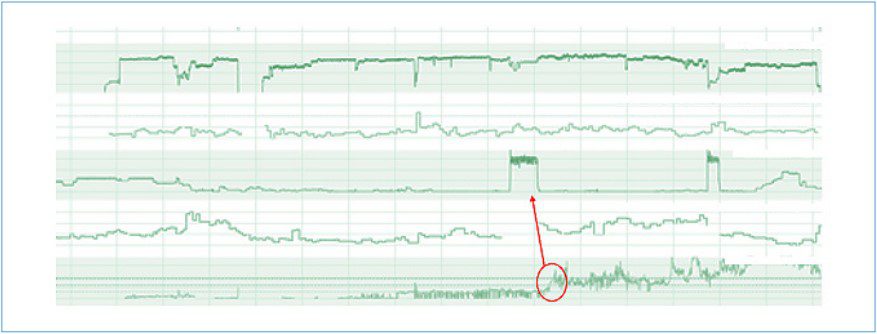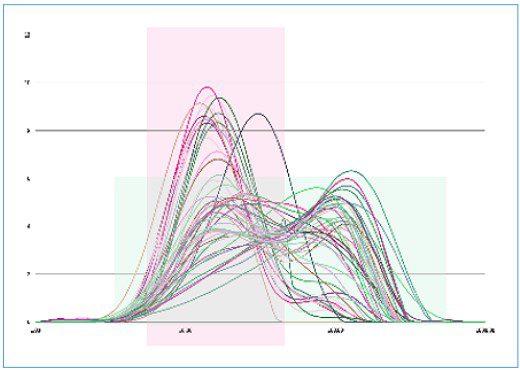At one of the largest refineries in the world, a global oil concern produces a variety of energy and chemicals. The plant has a complex network of processing units of which one is focused on the generation of hydrogen. The reliability team asked MaxGrip to come in and assist with some highly critical assets.
Challenge: Find Root Cause and Improve Asset Reliability
The supermajor oil company strives to have its refinery in the best condition with optimal asset reliability, now and in the future. To contribute to that goal, MaxGrip was asked to analyze and find the root causes of problems occurring with some critical equipment. These problems should be solved and prevented in the future. It was important for the oil producer to have this project successfully carried out as it would also mitigate the associated Health, Safety and Environment (HSE) risks, improve Overall Equipment Effectiveness and increase uptime. The singledout assets play an important role in producing hydrogen, which is a type of clean fuel that is expected to play a major role in the energy transition.
Approach: RCA and Predictive Analytics
The MaxGrip consultant started with collecting the available data and information and defining the business case (financial, safety, health and environment perspectives included) to prove that the assets experience the problems and that it was crucial to get them solved. The consultant’s Root Cause Analysis (RCA) was then used as the basis for a hypothesis of root causes which was shared with the (multidisciplinary) asset support team to gather their feedback and keep them in the loop.
The hypothesis, available data and RCA was shared with the data science team to have them perform a data analysis and validate the suspected root causes. Our consultant then analyzed the resulting data report and drew conclusions based on the available knowledge and their own domain expertise. They also formulated clear short and long term actions to mitigate the problems.
These actions were carried out by the asset support team. New real time condition monitoring tools were implemented triggering the Operations team instantly when deviations occur. This gave the team more control, predicting and preventing failures timely.
Case 1 – Hydrogen production
To improve the uptime and to extend the lifetime of the equipment, some
challenges had to be solved. One of those was the rapid corrosion mechanisms. The hypothesis was that the corrosion mechanisms were caused by a rapid decrease of throughput. The historical data proved the assumption and could provide input for recommendations regarding the operating window to mitigate the problem.
Based on the data analysis, the MaxGrip consultant shared their findings with the multidisciplinary asset support team. They modified the processes to mitigate the problem also upgrading various steps in the steel fabrication process. Due to the mitigation of the problem and having preventive and predictive measures in place, the lifetime of the assets was more than tripled creating significant more revenue, fewer maintenance interventions and less exposure to HSE risks.

The data clearly shows a rapid increase indicating a causal event.
Case 2 – Soot ash recovery
For the soot ash recovery unit, the refinery experienced an increased rate of
unexplainable temperature excursion that could lead to fire. This resulted in
significant margin losses and severe HSSE risks making this a site-wide priority
to further understand and resolve.
After a significant amount of interviews, the MaxGrip consultant focused the
hypothesis on the design parameters and suspected that the asset was operating beyond its design criteria. Initially, the team did not suspect that they were operating beyond its design criteria, nevertheless, with advanced historical data analysis it was proven to be the root cause. Actions were then swiftly implemented to mitigate the risk short term and develop long-term projects to upgrade the equipment.

A data example of operating outside of the design parameters - a change in the production process caused the participles to become smaller which caused made it easier for the particles to be airborne.

This is another example of operating outside of the design parameters. According to the norm, the blue line would have to be much higher than the orange line in order to be sufficient.
The Results
So far, MaxGrip’s trusted advisor has solved three important cases for the refinery.
This has resulted in:
- Over five million dollar savings YoY for these three cases alone.
- A significant improvement in Overall Equipment Effectiveness;
- Asset lifetime extensions;
- HSE risks mitigated;
- Working smarter also mitigated high strain on scarce maintenance resources. Due to a higher asset reliability less maintenance personnel is needed.
- Exemplary interdisciplinary collaboration between the reliability engineering team, management and data science team (with the MaxGrip consultant as the key player).
- Change management: substantiating hypotheses with data shows a new way of working to the team. The consultant’s change management skills in combination with their domain expertise were invaluable in this process and getting buy-in from the team.
Get inspired
NVDO Webinar about getting your APM data in order (in Dutch).
Process and data standardization are crucial for any successful long-term asset strategy. An article sharing best practices.





